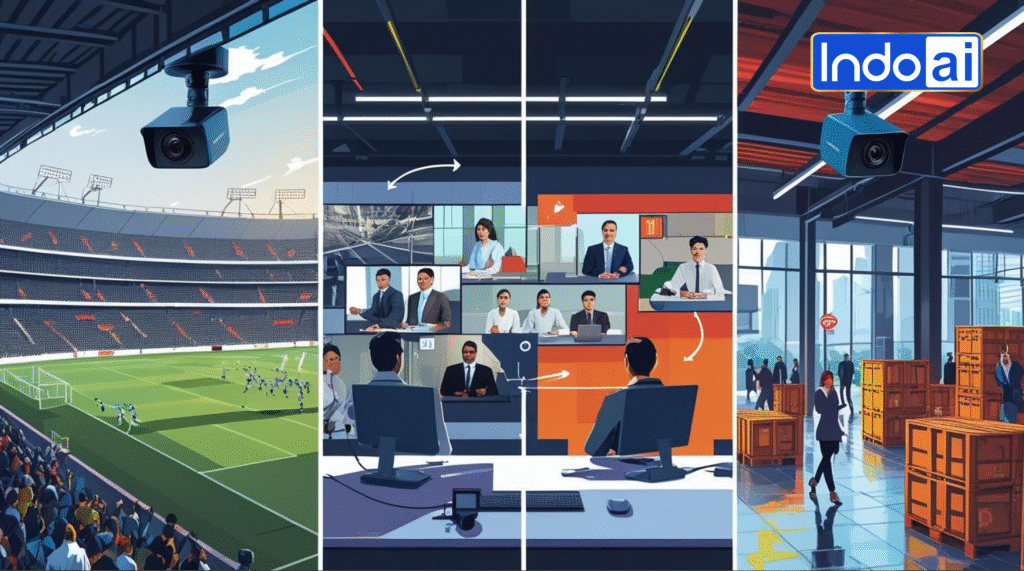PTZ cameras, short for pan-tilt-zoom cameras, are robotic cameras that offer a wide range of motion and control. They are commonly used in various applications such as surveillance, broadcasting, and video conferencing. In this article, we will explore what PTZ cameras are, why they are used, when they are most beneficial, and where they can be deployed. The term panning implies left or right movement while tilting is for up and down movement.

What are PTZ Cameras?
PTZ cameras are robotic video cameras that can pan horizontally (left to right), tilt vertically (up and down), and zoom in or out. These cameras provide enhanced flexibility and control compared to fixed cameras. They are typically controlled remotely by an operator using a camera controller. PTZ cameras are also generally dome shaped, but they’re far more fluid than a dome camera.
Why Use PTZ Cameras?
PTZ cameras offer several advantages over fixed cameras:
Wide-Area Coverage: PTZ cameras can cover expansive areas with their ability to pan and tilt. This makes them ideal for monitoring large spaces such as parking lots, stadiums, or city centers.
Zooming Capabilities: With their zoom functionality, PTZ cameras can capture fine details from a distance. This is particularly useful in scenarios where close-up views are required.
Auto Tracking: Some PTZ cameras come with auto-tracking features that allow them to autonomously track specific objects or individuals. This is beneficial in security applications where continuous monitoring is necessary.
Panoramic Views: Certain PTZ camera models support panoramic views achieved through image stitching of multiple camera feeds. This feature provides a wider field of view and can be useful in surveillance applications.
When to Use PTZ Cameras?
PTZ cameras are most beneficial in situations that require flexible coverage and dynamic monitoring. Here are some scenarios where PTZ cameras excel:
Security Surveillance: PTZ cameras are commonly used for security surveillance due to their ability to cover large areas and track objects of interest.
Broadcasting: In live broadcasting settings, PTZ cameras enable operators to capture different angles and perspectives without the need for multiple camera setups.
Video Conferencing: PTZ cameras find applications in video conferencing setups where they can be remotely controlled to focus on different participants or areas of interest.
Where Can PTZ Cameras Be Deployed?
PTZ cameras can be deployed in various environments depending on the specific requirements of the application:
Outdoor Surveillance: PTZ cameras with weatherproof enclosures are suitable for outdoor surveillance applications such as parking lots, building exteriors, or public spaces.
Indoor Monitoring: PTZ cameras can also be used indoors for monitoring areas like conference rooms, retail spaces, or warehouses.
Broadcast Studios: In broadcasting studios, PTZ cameras offer flexibility in capturing different shots without the need for manual camera adjustments.
PTZ cameras provide enhanced control and flexibility compared to fixed cameras. Their ability to pan, tilt, and zoom makes them suitable for various applications such as security surveillance, broadcasting, and video conferencing. By understanding what PTZ cameras are capable of and when to use them, users can make informed decisions about incorporating these versatile devices into their setups.
Remember to consider factors such as coverage requirements, zoom capabilities, auto-tracking features, and environmental conditions when selecting a PTZ camera for your specific needs.



